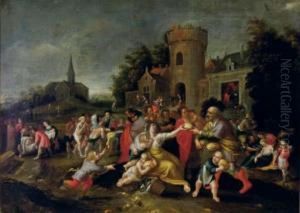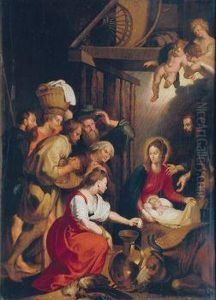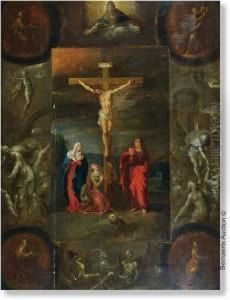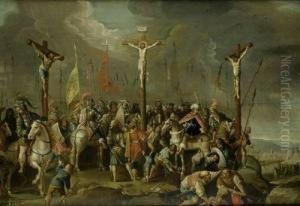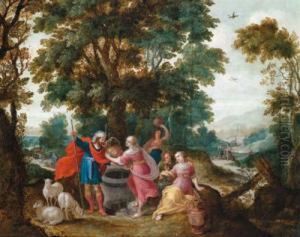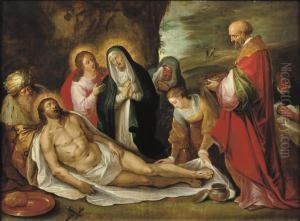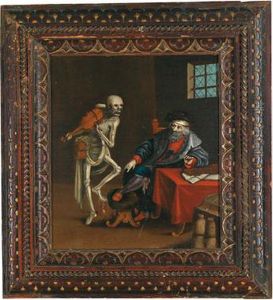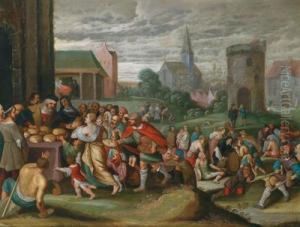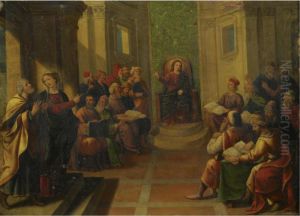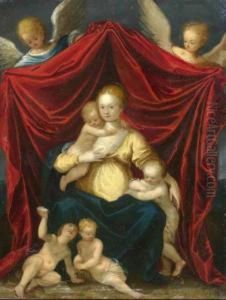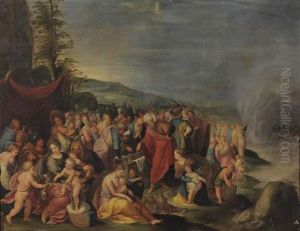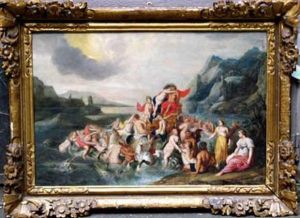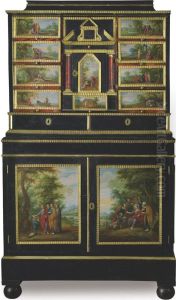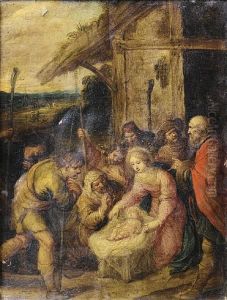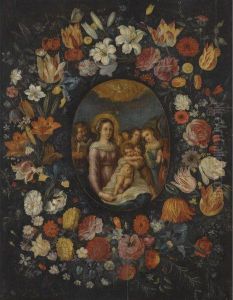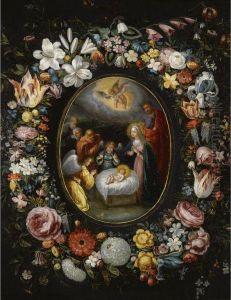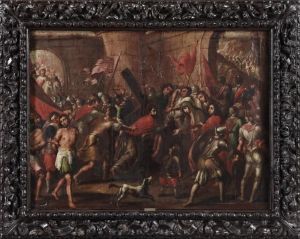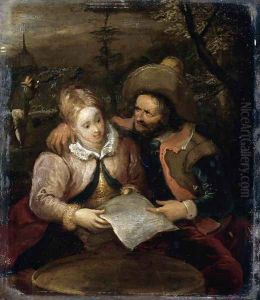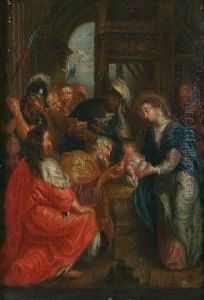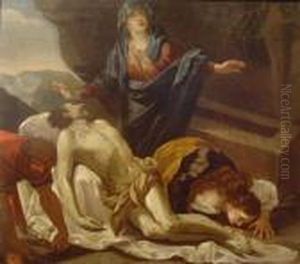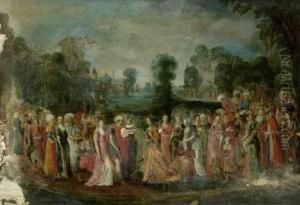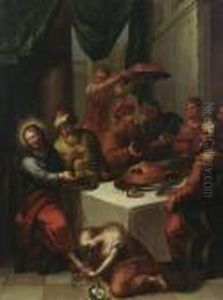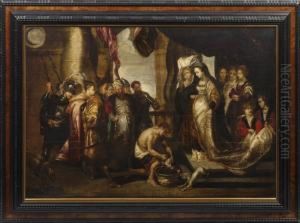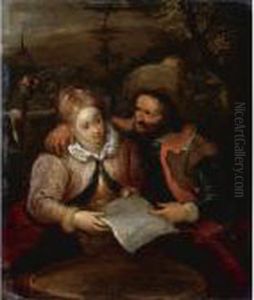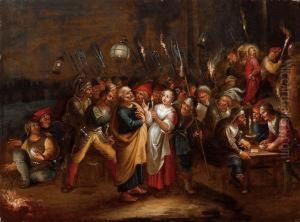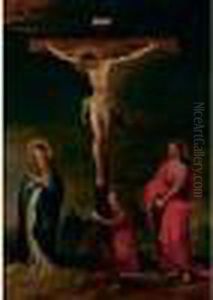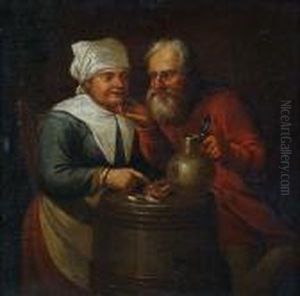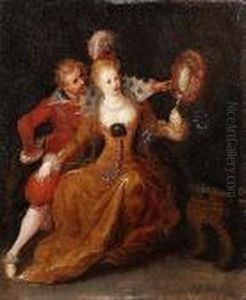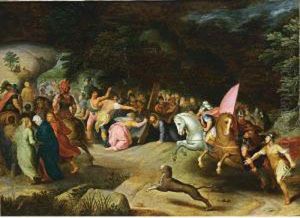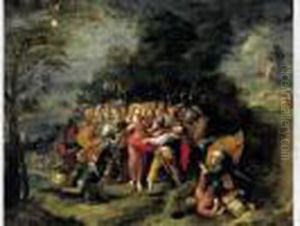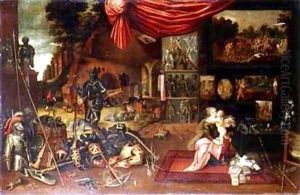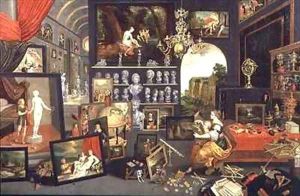Frans III Francken Paintings
Frans III Francken was a Flemish Baroque painter, a member of the famous Francken family of artists who played a significant role in the development of Antwerp as a major center for art in the 17th century. Born in Antwerp in 1607, he was the son of Frans II Francken and Elisabeth Mertens. His grandfather, Frans I Francken, was also a prominent painter, establishing the family's artistic dynasty.
Frans III trained under his father, Frans II, who was known for his history paintings, allegorical scenes, and as a pioneer in the genre of 'gallery paintings' that depicted imaginary art collections. Frans III continued in this tradition but also developed his own style, which was characterized by a lighter palette and elegant figures, reflecting the changing tastes of the period.
During his career, Frans III Francken primarily focused on cabinet paintings, small-scale works that were sought after by collectors for private enjoyment. His subject matter was diverse, ranging from religious and historical scenes to genre paintings and still lifes. He was particularly adept at integrating various elements into cohesive and harmonious compositions, a skill that made his works popular among the art connoisseurs of the time.
Despite being less well-known than his father or his uncle Hieronymus Francken II, Frans III was a successful artist in his own right. His paintings were collected by the wealthy bourgeoisie in Antwerp and abroad, and his works were often exported to other parts of Europe, contributing to the spread of Flemish art and influence.
Francken's contribution to the art of the period was significant, as he helped to perpetuate the Francken family's legacy into the mid-17th century, adapting the family style to the evolving aesthetic of the day. His work is represented in various museums, and he is remembered as part of a dynasty that helped define the Antwerp school's contribution to Flemish art.
Frans III Francken passed away in 1667, leaving behind a body of work that reflects both his family's artistic tradition and his own individual contributions to the Flemish Baroque movement. His paintings continue to be studied and appreciated for their intricate detail, compositional skill, and the insight they provide into the culture and society of 17th-century Flanders.
